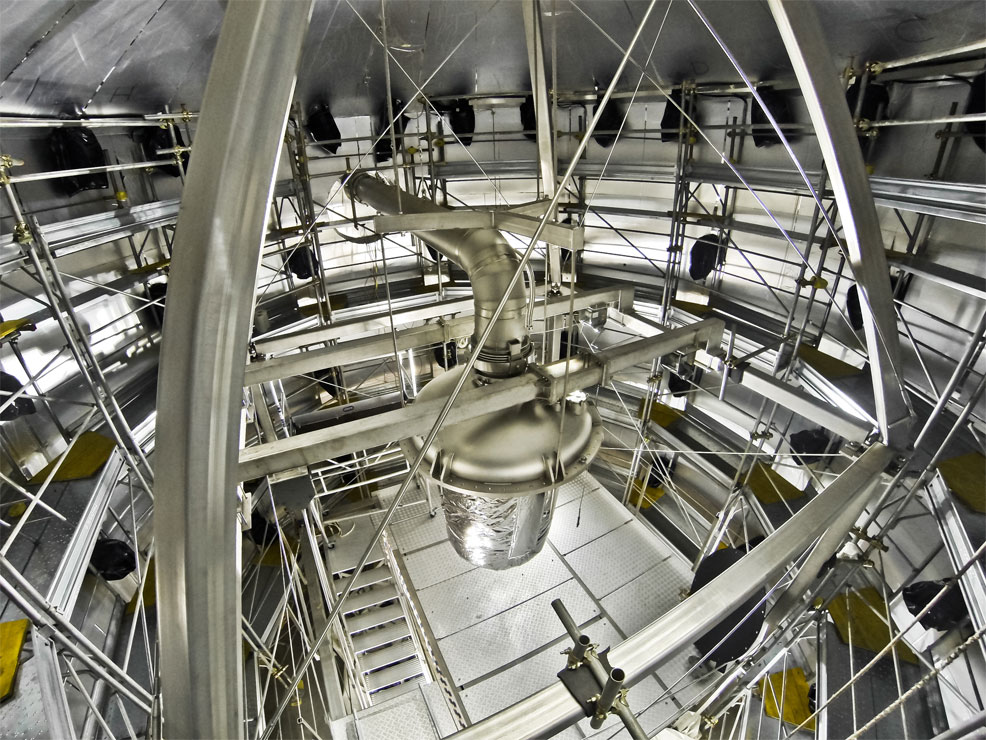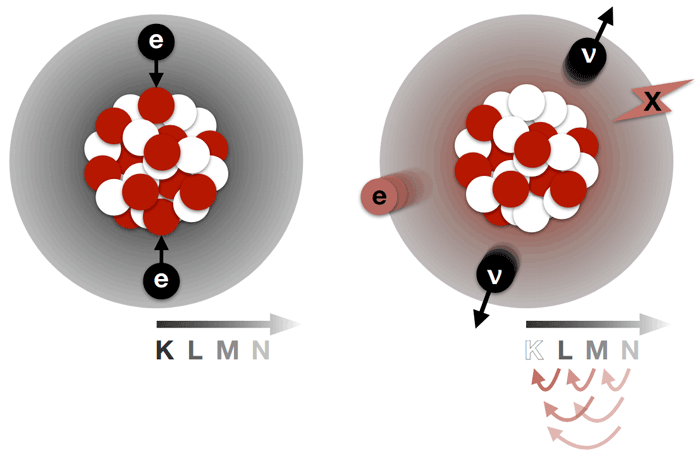
26th April 2019 Dark matter project observes "rarest event ever recorded" The XENON dark matter project has observed the radioactive decay of xenon-124, which has a half-life of 1.8 X 1022 years.
How do you observe a process that takes more than one trillion times longer than the age of the universe? The XENON project in Italy has achieved this, using an instrument designed to detect the most elusive particle in the universe – dark matter. This week in the journal Nature, researchers announce that they witnessed the radioactive decay of xenon-124, which has a half-life of 1.8 sextillion (18,000,000,000,000,000,000,000) years. "We actually saw this decay happen. It's the longest, slowest process that has ever been directly observed, and our dark matter detector was sensitive enough to measure it," said Ethan Brown, an assistant professor of physics at Rensselaer Polytechnic Institute and co-author of the study. "It's amazing to have witnessed this process, and it says that our detector can measure the rarest thing ever recorded." Another atom, tellurium-128, is known to decay with an even longer half-life; however, its decay was never observed directly and the half-life was inferred indirectly from another process. The XENON Collaboration is operated at the Gran Sasso National Laboratory, Italy. In this deep underground research facility is XENON1T – a 1,300 kg (2,900 lb) vat of ultra-pure liquid xenon, shielded from cosmic rays in a cryostat submerged in water, 1.5 km (0.93 mi) beneath the Gran Sasso mountains. Here, the researchers hunt for dark matter (which is five times more abundant than ordinary matter, but rarely interacts with it), by recording tiny flashes of light created when particles interact with xenon inside the detector. And while XENON1T was built to capture the interaction between a dark matter particle and the nucleus of a xenon atom, the detector actually picks up signals from any interactions with the xenon.
Evidence for xenon decay was seen as a proton in the nucleus of a xenon atom was converted into a neutron. In most elements subject to decay, this will usually occur when one electron is pulled into the nucleus. But two protons in a xenon atom must simultaneously absorb two electrons to be converted into two neutrons – an event called "double-electron capture." Double-electron capture only happens when two of the electrons are right next to the nucleus at just the right time, Brown said, which is "a rare thing multiplied by another rare thing, making it ultra-rare." When this ultra-rare event happened, and a double-electron capture took place inside the detector, the machine's instruments picked up the unique signal of electrons in the atom re-arranging to "fill in" for the two that were absorbed into the nucleus.
"Electrons in double-capture are removed from the innermost shell around the nucleus, and that creates room in that shell," said Brown. "The remaining electrons collapse to the ground state, and we saw this collapse process in our detector." The achievement is the first time scientists have measured the half-life of this xenon isotope based on a direct observation of its radioactive decay. "This is a fascinating finding that advances the frontiers of knowledge about the most fundamental characteristics of matter," said Curt Breneman, dean of the Rensselaer School of Science. "Dr. Brown's work in calibrating the detector and ensuring that the xenon is scrubbed to the highest possible standard of purity was critical to making this important observation." The XENON project includes 160 scientists from Europe, the United States and the Middle East, and, since 2002, has operated three successively more sensitive liquid xenon detectors in Gran Sasso National Laboratory. XENON1T, the largest detector of its type ever built, acquired data from 2016 until December 2018, when it was switched off. Scientists are now upgrading the experiment for the new XENONnT phase, which will feature an active detector mass three times larger than XENON1T. Together with a reduced background level, this will boost the detector's sensitivity by an order of magnitude.
Comments »
If you enjoyed this article, please consider sharing it:
|








